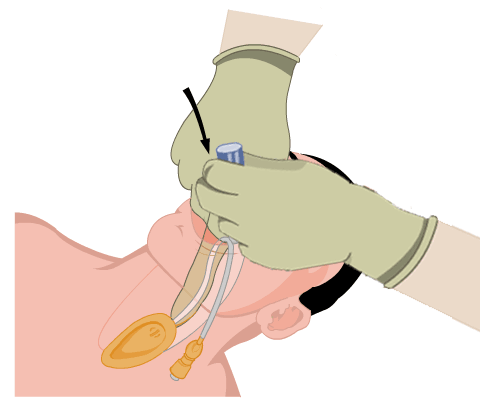3. Final Push
For many anaesthetists the index finger will not be long enough to push the cLMA all the way in.
When this occurs it is important that the dominant hand remains in place and the non-dominant is used to advance the cLMA tube. The dominant hand is not moved and controls the direction of advancement until the cLMA is seated.
The correct position is recognized when the cLMA stops advancing as it is gripped by the upper oesophageal sphincter.

Push cLMA into final correct position